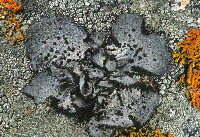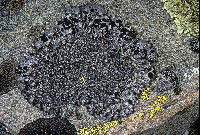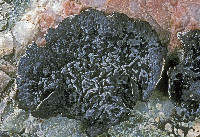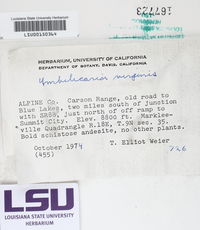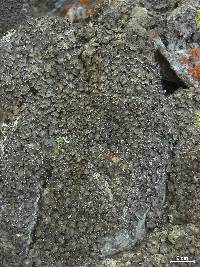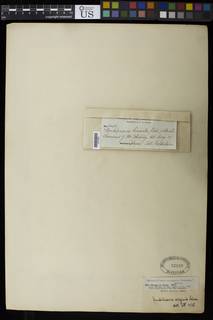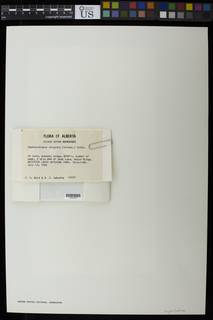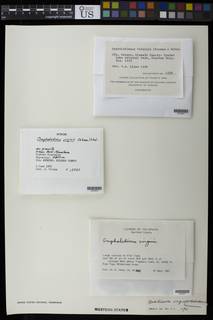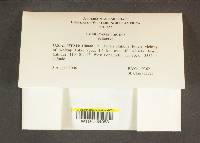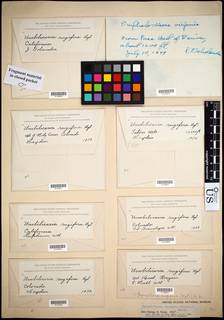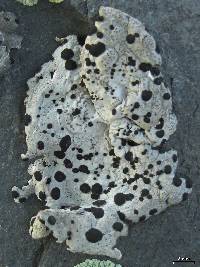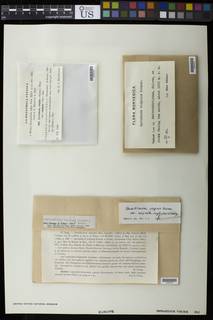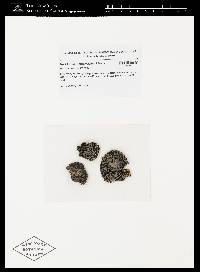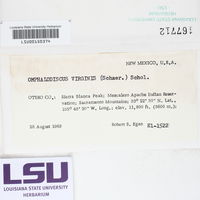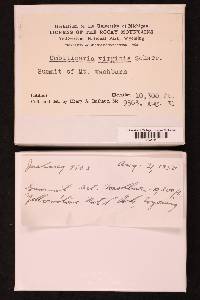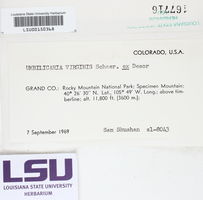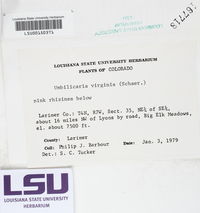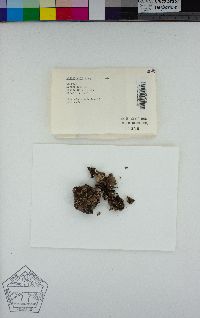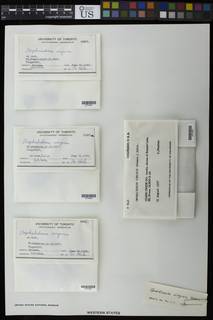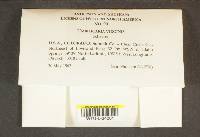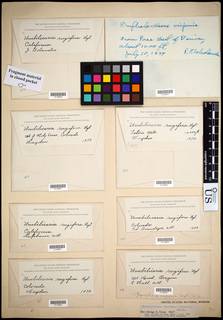
Consortium of Lichen Herbaria
- building a Global Consortium of Bryophytes and Lichens as keystones of cryptobiotic communities -
- Home
- Search
- Images
- Species Checklists
- US States: O-Z >
- US National Parks
- Central America
- South America
- US National Parks
- Southern Subpolar Region
|
|
|
|
Family: Umbilicariaceae
[Agyrophora stipitata (Nyl.) Nyl., moreAgyrophora virginis (Schrad.) M. Choisy, Gyrophora rugifera (Nyl.) Th. Fr., Gyrophora rugifera var. stipitata (Nyl.) K.G.W. Lång, Gyrophora stipitata (Nyl.) Branth, Gyrophora virginis (Schrad.) Frey, Gyrophora virginis var. coloradoënsis Räsänen, Gyrophora virginis var. stipitata (Nyl.) Räsänen, Gyrophora virginis var. virginis (Schaer.) Frey, Omphalodiscus virginis (Schaer.) Schol., Omphalodiscus virginis var. orizabanus (Vain.) Llano, Omphalodiscus virginis var. virginis (Schrad.) Schol., Umbilicaria stipitata Nyl.] |
Nash, T.H., Ryan, B.D., Gries, C., Bungartz, F., (eds.) 2004. Lichen Flora of the Greater Sonoran Desert Region. Vol 2. Thallus: umbilicate, monophyllous, rigid, +circular, 1.5-4(-20) cm in diam. upper surface: ivory to light gray or brownish gray, dull, with a pattern of sharp ridges centrally, coarsely pruinose with crystals centrally near umbo medulla: white lower surface: white or buff to pink, smooth to minutely roughened, commonly with a brown-black zone around the umbilicus, usually thickly covered with long, slender, white, branched rhizinomorphs Apothecia: common, black, weakly omphalodisc (a thin slit in the middle) sometimes with several circular elevations, sessile to substipitate, up to 3 mm in diam. asci: clavate, 8-spored ascospores: hyaline, simple, ellipsoid, 10-15 x 5-8 µm Spot tests: medulla K-, K+ red, C+ red, KC+ red, P- or P+ orange Secondary metabolites: gyrophoric and stictic acids. Substrate and ecology: below snow in winter on acidic rocks World distribution: Europe, Asia and North America Sonoran distribution: scattered, on the high peaks of Arizona, southern California. Notes: Its often pinkish lower surface and abundant rhizinomorphs are characteristic of U. virginis. The habitat ecology of this species in the Sonoran region seems to differ from that in Europe where it is confined to sheltered places on the highest peaks. This difference also may account for the fact that U. virginis in the Sonoran region does not reach the large sizes of some European specimens. |
|
|
|
Powered by Symbiota







